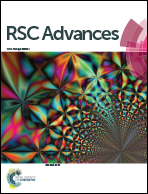Fabrication temperature modulates bulk properties of polymeric gels synthesized by different crosslinking methods
Abstract
The effects of a natural matrix like extracellular matrix (ECM) on cell growth, proliferation and induction of mechanotransduction signals are well documented. Mimicking the mechanical and rheological character of ECM to repair, reconstruct and regenerate injured or impaired tissue using the concepts of tissue engineering is of significant importance. We intended to study the effect of “synthesis temperature” on mechanical and rheological properties of monomeric and polymeric scaffolds fabricated from either monomer based polyacrylamide gels or by physical gelation (agarose gels) or chemical crosslinking (chitosan, chitosan–gelatin and chitosan–agarose–gelatin (CAG) gels) at −15 °C, −5 °C or 25 °C. Our results indicated that in the absence of porogens in the form of ice crystals, conventional hydrogels had higher mechanical strength and low porosity as compared to cryogels synthesized at −15 °C and −5 °C. Furthermore, rheological analysis performed on these gels indicated temperature dependence of rheology. CAG cryogels had higher storage modulus as compared to freeze dried (FD) hydrogels or conventional hydrogels in the wet state making them amiable for cartilage tissue regeneration. Out of all synthesized gels, CAG showed better mechanical and rheological properties and was further studied to analyze the interaction with primary chicken chondrocytes. In vitro experiments on CAG scaffolds revealed a significant amount of ECM production along with good cell proliferation as indicated by MTT assay and SEM analysis.


 Please wait while we load your content...
Please wait while we load your content...